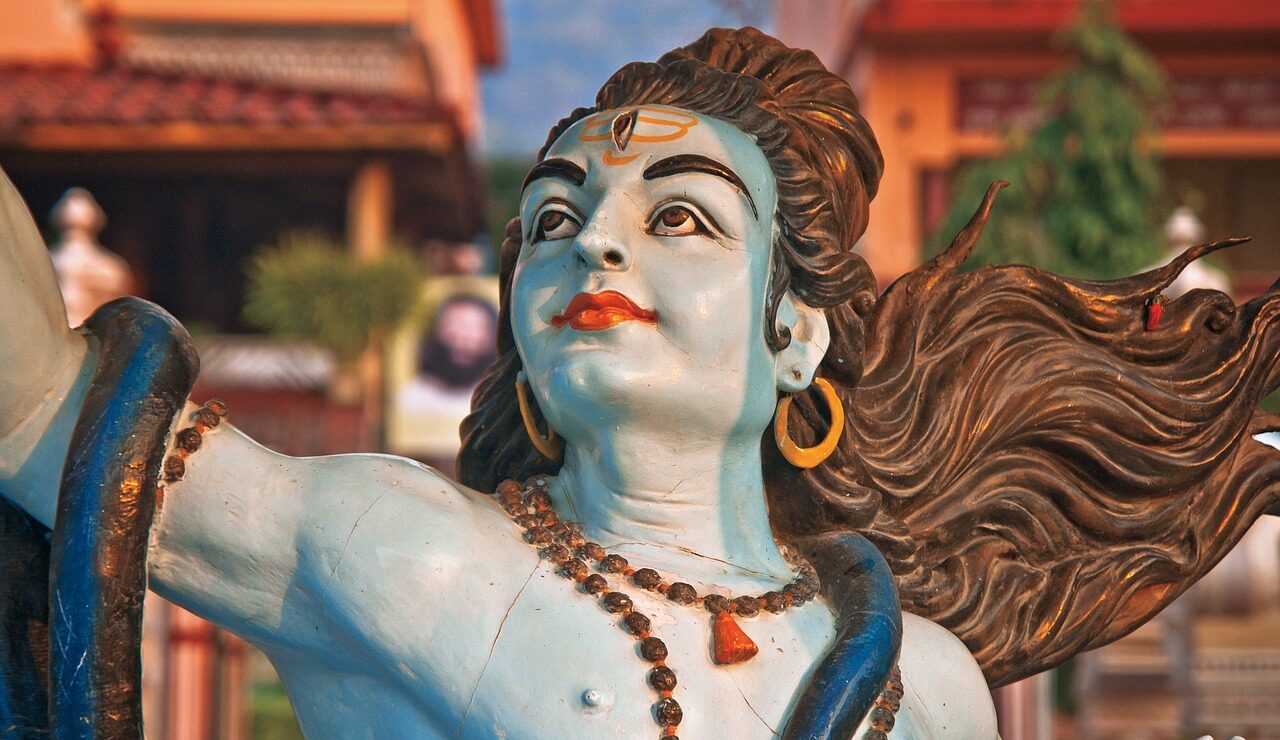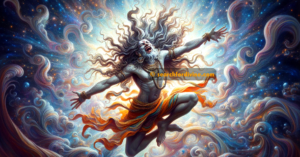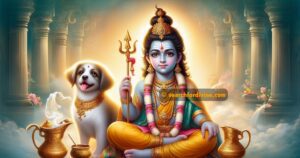Can women worship Kaal Bhairava
The powerful figure of Kaal Bhairav, with his fierce gaze and transformative energy, often sparks a question: Can women worship Kaal Bhairav? Doubts and misconceptions can sometimes arise, particularly for women seeking his blessings. This blog aims to dispel these myths and empower women, drawing directly from the wisdom of the authentic Shastras.
Beyond Duality: Bhairava Transcends Gunas
न स सत्त्वं न रजः स्तद्वा तमः किञ्चन भैरवे।
त्रिगुणात्मक जगत्सर्वं भैरवात्मा तदक्षरम्।।
There is neither Sattva, Rajas, nor Tamas in Bhairava. The entire universe, composed of the three Gunas, is the eternal and unchanging essence of Bhairava.
भूमिर्भैरवपादौ च जलं भैरवमूर्धनि।
अग्निर्भैरवनेत्रं च चन्द्रमा भैरवाननम्।।
The earth is at Bhairava's feet, and water is on his head. Fire is Bhairava's eye, and the moon is his face.
सर्वदा सर्वभूतेषु भैरवः स्थितिरूपधृक्।।
Bhairava always resides within all beings as the form of stability.
One common misconception is that Bhairava is a Tamasic deity. The Shastras teach us that Devas, the divine beings, exist beyond the three Gunas (Sattva, Rajas, Tamas) – qualities that govern our material world. They represent pure consciousness, encompassing all aspects of existence. Bhairava, as a powerful aspect of Shiva, embodies this very essence.
The Fierce and the Gentle: Unveiling Bhairava's Duality
Another misconception stems from Bhairava’s association with Tantra and his fierce appearance. While the Shastras acknowledge his transformative nature, they also emphasize his gentle and compassionate side. For instance, the Bhairava Yashti of the Shiva Purana describes him as a remover of obstacles and a granter of wishes.
Understanding Bhairav's Symbolism
Bhairava’s iconography reflects his multifaceted nature. The skull garland signifies his power to overcome death and impermanence. The dog by his side represents loyalty and discernment. The white dog signifies purity, while the black dog represents overcoming darkness. Bhairava’s fierce countenance signifies his ability to ward off negativity and protect his devotees, irrespective of gender.
The Universality of Bhairava's Blessings
न पुंस्त्वं न च स्त्रीत्वं न चैवा परिवर्तनम्।
न जन्म न च मृत्युश्च भैरवे तत्त्वरूपिणि।।
There is neither male nor female in Bhairava, the embodiment of truth. There is neither birth nor death in the form of Bhairava.
दिङ्मण्डलं भैरवस्य शरीरं चक्रवर्त्मनः।
जगत्स्थितं सर्वं चैव भैरवात्मा तदक्षरम्।।
The circle of directions is the body of Bhairava, the universal king. Everything that exists in the world is the eternal and unchanging essence of Bhairava.
जातिभेदो न मे देहे वर्णाश्रमविभागकृत्।
मन्त्रो नास्ति ममैवास्ति सर्वे मन्त्रा हि मे मम।।
There is no distinction of jati in my body, nor division based on color or life stage. There is no specific mantra for me, all mantras belong to me.
The beauty of worshipping Kaal Bhairav lies in its inclusivity. Unlike some rituals with specific requirements, this practice welcomes all sincere devotees. The Shastras, including the Shiva Rahasya and the Kulārṇava Tantra, do not prescribe limitations based on gender. Bhairava transcends such boundaries, embracing all who seek his blessings.
Alcohol Offering: A Symbolic Gesture
Another misconception concerns the offerings associated with Bhairava worship. The Shastras explain that offerings like meat and alcohol are symbolic representations. Meat signifies worldly desires that Bhairava helps us transcend. Alcohol symbolizes the intoxication of ego, which he helps us overcome. Ultimately, Bhairava accepts all offerings made with devotion, and a simple puja with flowers and fruits can be equally potent.
The Call of Bhairava: Recognizing Your Ishta Devata
The Shastras mention 64 Bhairavas, each with unique characteristics. There’s a Bhairava for every temperament (Swabhava). Women, just like men, can develop a connection with the Bhairava that resonates most with their spiritual needs. This connection transcends gender and fosters inner transformation.
How Women Can Approach Kaal Bhairav Worship
Women seeking Bhairava’s blessings can embrace the following practices:
Seek Guidance: While the worship itself is accessible, consulting a qualified Guru or priest for proper understanding of rituals and offerings is recommended.
Purity of Intention: Approach the worship with a pure heart, seeking Bhairava’s protection, overcoming challenges, or achieving spiritual growth.
Regular Practice: Regular prayers or chanting, even for a short duration, are more beneficial than sporadic practices. Consistency builds a stronger connection with Bhairava’s energy.
Faith and Respect: Devotion and respect are paramount. Bhairava responds to the sincerity in your heart, regardless of gender.
For a detailed, step-by-step guide based on the Shastras for performing home puja, please refer to: Step-by-Step Bhairava Home Worship Guide.
Examples of Women Worshipping Bhairava
History offers examples of women who worshipped Bhairava and received his blessings. The Devi Bhagavata Purana mentions Bhairavi, a fierce aspect of the Divine Mother, who emerged from Bhairava. Stories abound of queens and yoginis who sought Bhairava’s protection and guidance.
The worship of Kaal Bhairav is a powerful tool for spiritual growth and transformation. By understanding Bhairava’s true nature beyond misconceptions, women can open themselves to his immense kindness and protection. This ancient practice, rooted in the wisdom of the Shastras, welcomes all sincere seekers, empowering them to embrace their inner strength and wisdom. So, if you feel drawn to the energy of Bhairava, step forward with an open mind and a pure heart. Bhairava’s blessings transcend societal limitations and can guide you on your unique spiritual journey.










Kaal Bhairav Ashtakam